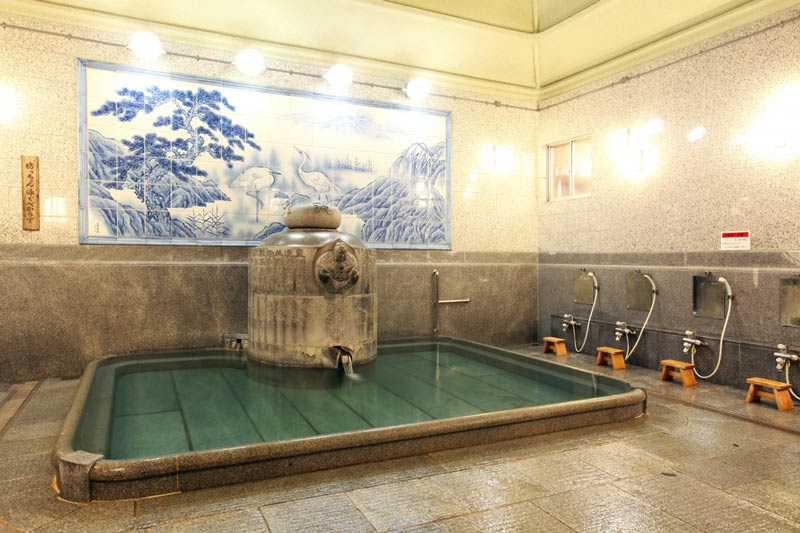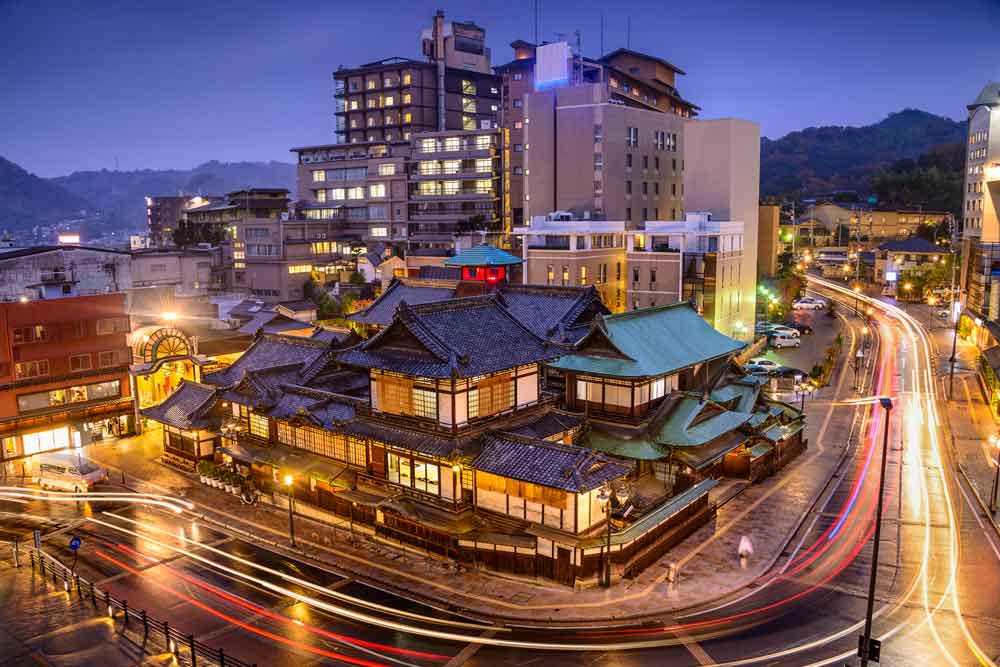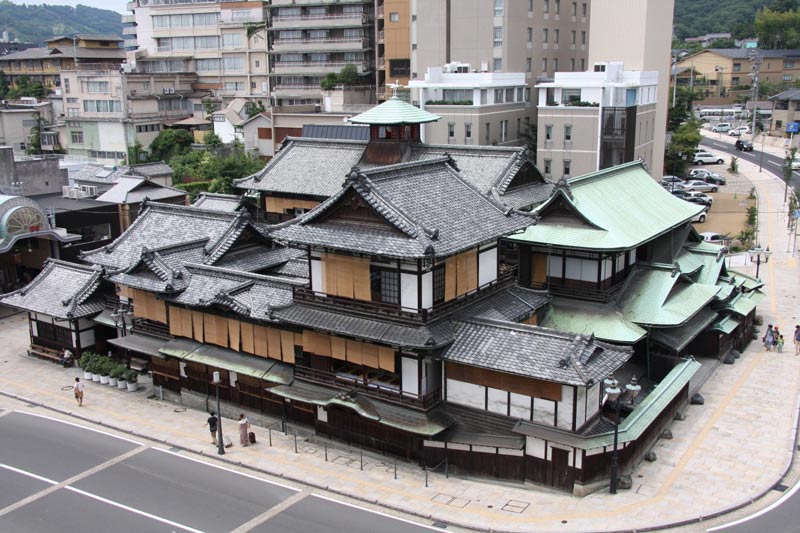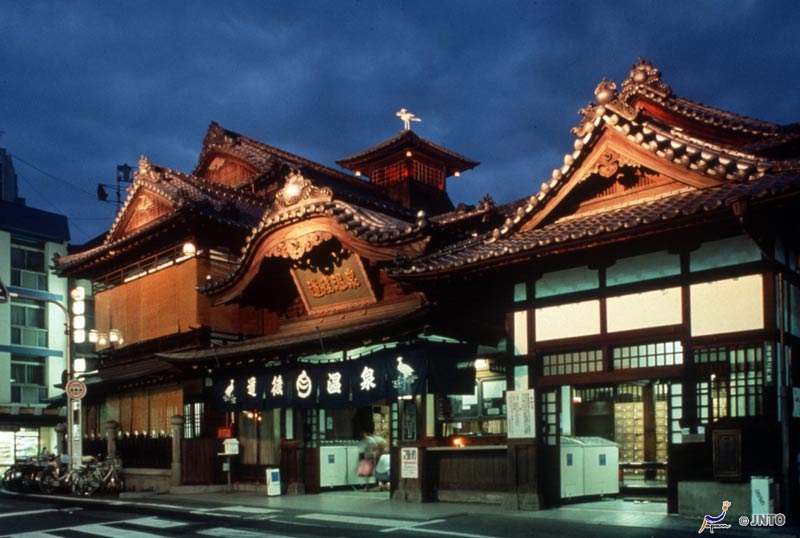Dogo (Dōgo) Onsen is the oldest and most famous of the onsen or hot springs in Japan. Known for its healing waters for over 1000 years visitors still seek it out and the local community still encompass it in their daily life. Find out more about this and other cultural sites and attractions in Matsuyama, Ehime.

You might have noticed my focus on Japanese onsen recently. I’ve been fortunate enough to make two visits to Japan in the past 6 months, once to the northern prefectures of Aomori and Hokkaido, then along the Golden Route between Osaka and Tokyo. On both of these visits I’ve had the opportunity to visit and experience the ritual and bliss of Japanese onsen or hot springs.
Rather than satisfy my curiosity with these traditional bathing establishments and regions it only fueled my desire to visit even more of them. Recently I’ve become aware of Matsuyama in Ehime, home to Dōgo Onsen, one of the oldest and most famous in Japan.
All about Dogo Onsen
When I visited Sakayu Onsen in Aomori last year I was fascinated by its enormous bath and 300 years of history but Dogo Onsen in Matsuyama can claim an incredible 1000+ year heritage AND an imperial connection.
The first known mention of Dōgo Onsen is in the legend of Prince Shōtoku as it’s set out in a collection of Japanese poetry from the year 759. Prince Shōtoku it seems travelled around the countryside quite a bit back then and as many of us do after a long hike, he enjoyed a good soak.

You’ll also find him mentioned in our central Kyoto walking tour that stops off at Rokkaku-do temple. Legend tells us that in the year 587 Prince Shotoku was bathing there in a small pond and was told in a dream to found a temple at that exact spot. As we travel around Japan I love uncovering these histories and legends that link the places we visit.
The current three-story public bathhouse of Dogo onsen dates back to 1894, although large it can get quite busy especially in the early evening. The facility is a popular destination for tourists of course but equally, locals regularly visit either before or after work, it’s still an important part of the community and daily life.
The other unique aspect of the facility is the Yushinden imperial baths. These were built in 1899 for the exclusive use of the imperial family, the only ones of their kind in the country. They’ve not now been used since 1950 but are open for guided tours.
A visit to Ehime
Ehime is located on Shikoku, the 4th largest of Japans islands. There are a variety of ways to get here including direct flights from cities such as Tokyo and Osaka, the efficient train system or a highway bus. Your choice will depend on your starting point, budget and the time you have available.
The town around Dōgo Onsen has many ryokan, traditional inns for visitors to stay. Even if you just have the one night it can be a fabulous experience to stay in an onsen town. Your accommodation will generally provide yukata (simple cotton robes) and geta (shoes). In these towns immediately around the onsen it’s quite acceptable to wear these traditional casual outfits around town, to and from the onsen or even down to dinner if you aren’t being served in your room.
At an onsen resort in Oirase Gorge in Aomori last year I headed down to dinner in my usual clothes rather than putting on the yukata outfit that was provided my room. It seemed that almost everyone everyone else staying in the resort was already wearing theirs and I really wished I had taken the time to change. I won’t make that mistake again.
Got more questions about onsen rules and ettiquette? We answer them in this post during a visit to Hakone Yuryo onsen.
More things to do in Ehime
While a visit, or multiple visits, to Dōgo onsen will be a priority while you’re here there are many other things to see and do around Matsuyama. Here are 3 other local stops not to miss:
Matsuyama Castle is a must to visit if you’re in Ehime. It’s one of only 12 remaining original castles left in Japan from the feudal period and one of the most complete. It has multiple wings of the main keep, a secondary keep, walls and turrets remaining. It’s a hilltop castle and you can walk to the top but for something different you can also take a chairlift or the ropeway to the top of the hill. There are great views of the Seto inland sea and Matsuyama.
Isheteji is one of 88 temples that make up the Shikoku pilgrimage. The grounds contain temple buildings in various styles and include national treasures and important cultural assets from the Kamakura period. There’s an impressive cave tunnel within the temple grounds containing Buddhist carvings and statues.
Gogoshima Island is only a 15 minute ferry trip away but a step back in time. Enjoy the beaches, take a bike over to cycle around, hike up Kofujiyama mountain and enjoy nature and the sea air. It’s a great spot to visit for birders too but do remember to take drinks and snacks over with you as there are no restaurants and few shops.
The onsen culture of Japan is both fascinating and a wonderful form of relaxation. Have you visited Dogo Onsen or another hot spring region in Japan? What are your recommendations?

